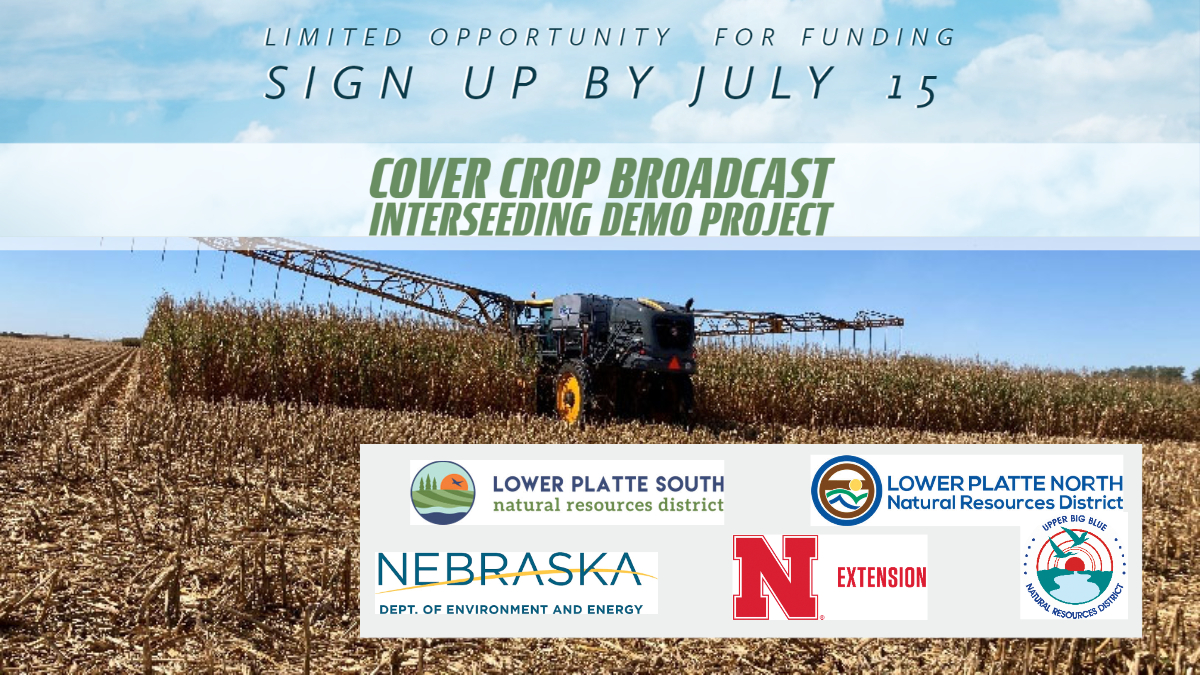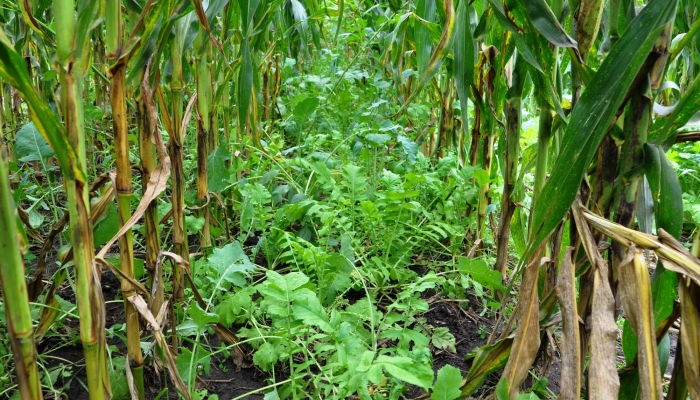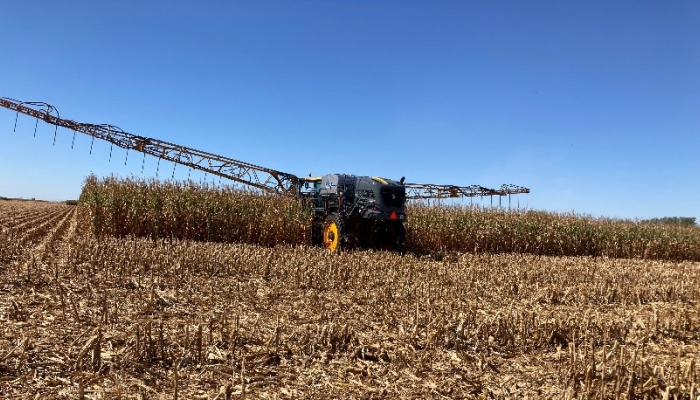No-cost cover crop option for some producers
Cover crops offer many benefits, from reduction of compaction to reducing erosion to increasing water infiltration, but for corn growers in Nebraska, there is one major challenge: time. Drilling cover crops is most often done post-harvest, but depending on weather conditions, planting that late in the season may be difficult. That’s why the Upper Big Blue Natural Resources District is working with partners to demonstrate the merits of using a high clearance interseeder to plant cover crop seed prior to harvest. Use of this method should allow for cover crops to get established before winter dormancy and develop a more robust stand in the spring, adding maximum benefit.
“Participating in this demonstration project is a great opportunity for a few producers in our district to install cover crops at a more ideal time and in a no-risk setting,” said Marie Krausnick, assistant general manager of the Upper Big Blue. “Many producers have told us that they would like to start using cover crops, but the timing and the cost makes it hard to get started. This program will eliminate both of those barriers and will allow for greater access to the soil health benefits of cover crops.”
The high clearance seeder, or highboy, uses boom arms with drops to place seed between corn rows under the canopy. The corn is not impacted by the seeding process as the machine passes over the stalks. The cost of the cover crop seed, the machine, and the operator are all included in the demonstration program. The producer will be responsible for termination of the cover crop in the spring. Additionally, if there is not 0.25” of rain or more after seeding, then the producer must irrigate the cover crop (applies to irrigated ground only).
Corn growers with land in the Wahoo Creek watershed, Shell Creek watershed, the eastern portion of Beaver Creek and Lincoln Creek watersheds, or certain priority areas in the Lower Platte South NRD are eligible for the program. Fields must be currently planted to corn. Each participant may enroll up to 200 acres where cover crop seed costs are covered. Priority will be given to land with irrigation and in high‐traffic areas.
Nebraska Extension Educators will work with producers throughout the project to advise on cover crop selection, termination, soil health, water quality and the other agronomic aspects of the project.
The application deadline for this program is July 15. Cover crop seeding is expected to occur in August and September when corn is at the R5 stage. Currently, the program can only accept 10 producers in the Upper Big Blue district area.
This trial cover crop program is supported by a Nebraska Department of Environment and Energy Nonpoint Source Pollution Program (Section 319) grant and implemented by the Nebraska Extension in partnership with the Upper Big Blue, Lower Platte North, and Lower Platte South NRDs. The Upper Big Blue NRD also has other cover crop and soil health incentive programs that apply to the district more broadly. Krausnick encourages any district producer with an interest in cover crops to reach out to the NRD to find out which program best fits their operation.
A field day is also planned in conjunction with this project to allow producers from across the district the opportunity to watch the application process, inspect the machine, and examine the seeding pattern.
For full details and application, visit www.upperbigblue.org/ccdemo.

“Participating in this demonstration project is a great opportunity for a few producers in our district to install cover crops at a more ideal time and in a no-risk setting,” said Marie Krausnick, assistant general manager of the Upper Big Blue. “Many producers have told us that they would like to start using cover crops, but the timing and the cost makes it hard to get started. This program will eliminate both of those barriers and will allow for greater access to the soil health benefits of cover crops.”
The high clearance seeder, or highboy, uses boom arms with drops to place seed between corn rows under the canopy. The corn is not impacted by the seeding process as the machine passes over the stalks. The cost of the cover crop seed, the machine, and the operator are all included in the demonstration program. The producer will be responsible for termination of the cover crop in the spring. Additionally, if there is not 0.25” of rain or more after seeding, then the producer must irrigate the cover crop (applies to irrigated ground only).
Corn growers with land in the Wahoo Creek watershed, Shell Creek watershed, the eastern portion of Beaver Creek and Lincoln Creek watersheds, or certain priority areas in the Lower Platte South NRD are eligible for the program. Fields must be currently planted to corn. Each participant may enroll up to 200 acres where cover crop seed costs are covered. Priority will be given to land with irrigation and in high‐traffic areas.
Nebraska Extension Educators will work with producers throughout the project to advise on cover crop selection, termination, soil health, water quality and the other agronomic aspects of the project.
The application deadline for this program is July 15. Cover crop seeding is expected to occur in August and September when corn is at the R5 stage. Currently, the program can only accept 10 producers in the Upper Big Blue district area.
This trial cover crop program is supported by a Nebraska Department of Environment and Energy Nonpoint Source Pollution Program (Section 319) grant and implemented by the Nebraska Extension in partnership with the Upper Big Blue, Lower Platte North, and Lower Platte South NRDs. The Upper Big Blue NRD also has other cover crop and soil health incentive programs that apply to the district more broadly. Krausnick encourages any district producer with an interest in cover crops to reach out to the NRD to find out which program best fits their operation.
A field day is also planned in conjunction with this project to allow producers from across the district the opportunity to watch the application process, inspect the machine, and examine the seeding pattern.
For full details and application, visit www.upperbigblue.org/ccdemo.



